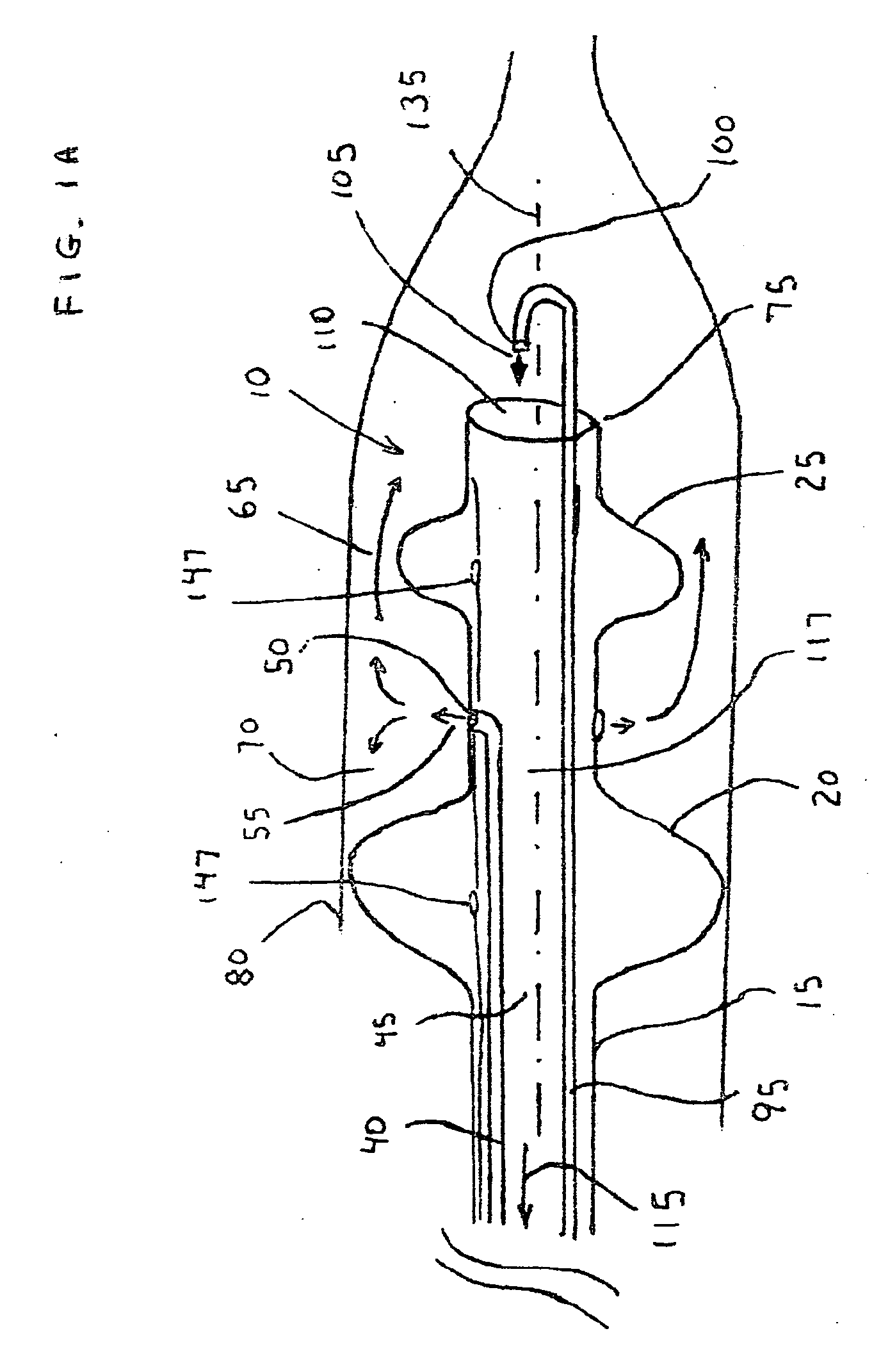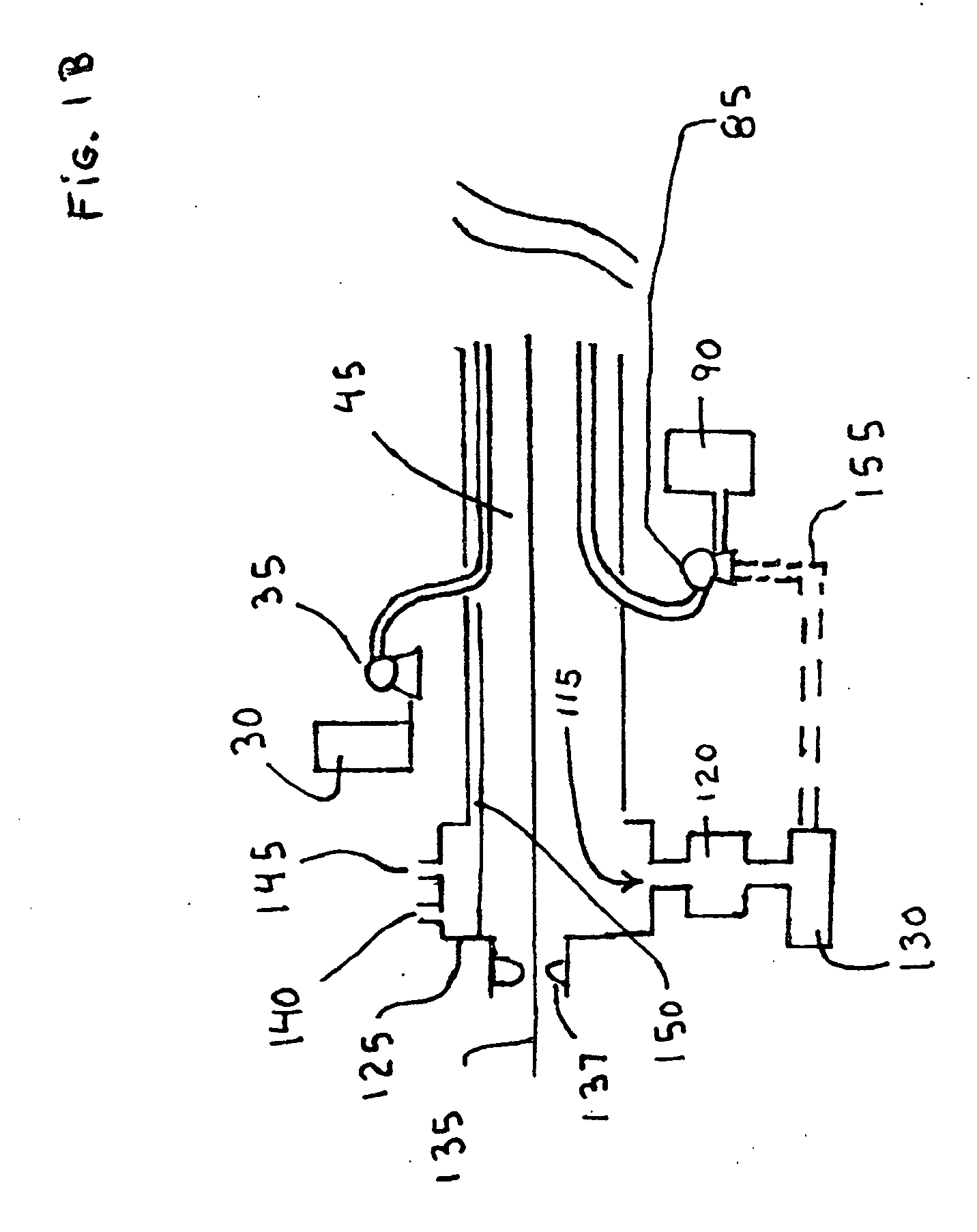Venous heated ablation catheter
a catheter and venous technology, applied in balloon catheters, medical science, surgery, etc., can solve the problems of varicose veins and superficial venous insufficiency, ineffective long-term occlusion maintenance, and high device cost, so as to improve the effectiveness of sclerosant, improve the effect of effectiveness and fluid handling
- Summary
- Abstract
- Description
- Claims
- Application Information
AI Technical Summary
Benefits of technology
Problems solved by technology
Method used
Image
Examples
first embodiment
[0080]FIGS. 1A and 1B show the delivery catheter (10). The delivery catheter (10) has a catheter shaft (15) with two balloons located at its distal end (75), a proximal balloon (20) and a distal balloon (25), the distal balloon (25) being somewhat smaller in diameter than the proximal balloon (20). The proximal balloon (20) makes contact with the vein to be treated and forms a seal along the perimeter of the balloon. A sclerosant solution is delivered from a first reservoir (30) by a first pump (35) to a side tube (40) located in the shaft lumen (45) to a side orifice (50) located between the balloons and directed outwards to form a side jet (55). The sclerosant solution can be formed from a sclerosing agent such as STS, POL, sodium morrhuate, ethanolamine oleate, glycerin, hypertonic saline, mixtures with alcohol or dextrose, iodine compounds, or other known sclerosing agents mixed with saline and having a CO2 gas or other soluble gas dissolved in the solution. Upon the side jet (5...
third embodiment
[0091]In a third embodiment the sclerosing medium can be a heated saline solution, heated sterile water, heated mixture, or heated sclerosing solution that causes the wall of the vein to become necrotic upon or soon after its contact. The heated saline or fluid can be heated via any means used in the medical device industry for heating a fluid to a temperature greater than 45 degrees Celsius such as with an electrical resistance heater. The heated fluid could be warmed to a preferred temperature that ranges from 45-55 degrees C. for improved ablative effectiveness; temperatures higher than this can also be used with increased effectiveness but with the potential for neurological pain. The distal jet (105) can also have heated saline or also it could be saline at normal body temperature to help return the vein to an equilibrium state that is closer in temperature to a normal body temperature. The heated fluid agent can effectively ablate a large superficial vein and can also make dir...
PUM
 Login to View More
Login to View More Abstract
Description
Claims
Application Information
 Login to View More
Login to View More - R&D
- Intellectual Property
- Life Sciences
- Materials
- Tech Scout
- Unparalleled Data Quality
- Higher Quality Content
- 60% Fewer Hallucinations
Browse by: Latest US Patents, China's latest patents, Technical Efficacy Thesaurus, Application Domain, Technology Topic, Popular Technical Reports.
© 2025 PatSnap. All rights reserved.Legal|Privacy policy|Modern Slavery Act Transparency Statement|Sitemap|About US| Contact US: help@patsnap.com



